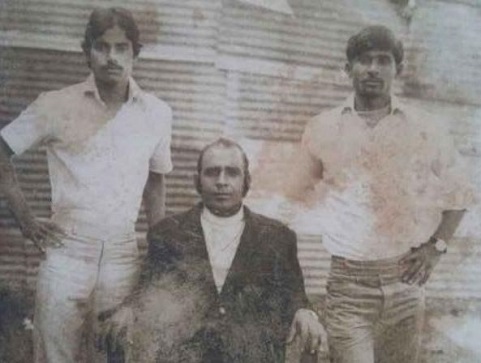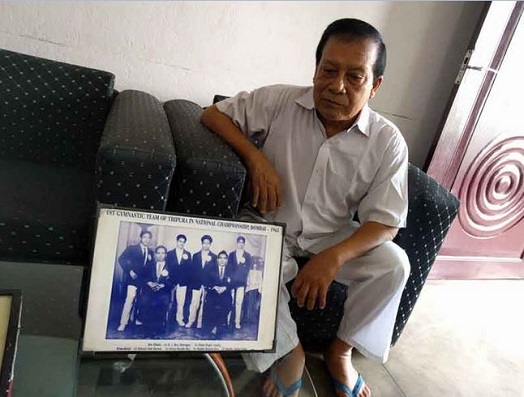Tripura: gymnastics
This is a collection of articles archived for the excellence of their content. |
History



• Tripura's connection with gymnastics began way before Dipa Karmakar; it was the 1960's to be precise
• Dalip Singh, an Army Sports instructor, turned things around for gymnastics in Tripura
• One of his proteges, Mantu Debnath became an Arjuna Awardee in 1975
Tripura is known as the 'Gymnastics hub' of the country.
'Gymnastics hub', the term itself promises a lot. 2016 was the first time in 52 years that an Indian gymnast has competed at the Olympics, which is quite puzzling. Until the late 80s, Tripura dominated the sport in national competitions. For 20 years, 24 gymnasts from Tripura went on to win 60 national championship medals. But soon, there emerged a dearth of gymnasts, particularly in the 1990s, when Tripura did not have much recognition. To change that required a special talent and who better than Dipa to break the drought with a bronze medal in the 2014 Commonwealth game.
Tripura's connection with gymnastics began in the 1960's to be precise, when a young man Dalip Singh, known as the father of gymnastics, decided to turn things around. Under him, Tripura remained the undisputed king of the sport. His proteges, the two most renowned being Mantu Debnath and Bharat Kishore Deb Burman, went on to become Arjuna Awardee in 1975 and the state's first gold medal at the national level respectively.
Singh was a member of the NIS (National Institute of Sports) in Patiala, the parent body of SAI (Sports Authority of India) and did a diploma in course coaching from a Russian gymnastics coach N I Takaishvili, in town to hold coaching course. He came to Tripura in 1964, and rest as they say, is history. On his arrival, he began proceedings at the Vivekananda Byamagar, which even though was built in 1947, gained prominence only on Singh's arrival.
One hears stuff about legends; how great they are; for being pioneers of the game and putting a sport on the mat; Don Bradman, Muhammad Ali and Roger Federer being case in point. The same can be said about Singh, who did things unheard of.
Dalip Singh, an Army sports instructor, was considered "father of gymnastics" in Tripura
"There was a coach who came here before as well. But he was so concerned at the infrastructure of the city that he walked away. This is exactly where late Mr. Dalip Singh was different. He never let the shoddy infrastructure affect his will. He would rather go door to door and ask parents to send their kids to Byamagar, luring the possibility of ending up with government jobs" Mantu Debnath tells TOI Sports. "Soon he moved to the regional Coaching Center (RCC). When he started there, he had proper place to get things done. At that point, there were two empty warehouses, where he would set up the equipments.
Singh's efforts were recognised well by the SAI, and the body, in the year 1968, brought a Soviet team of gymnastics - who were Olympians - to compete among the locals, including Debnath and Burman. The sole objective was to compete among the best in order to be the best. Then landed a team from Germany in 1970, followed by Chinese team in 1984. In 20 years, Singh had changed the entire landscape of gymnastics in the city, let alone India.
It was during that period when following on Debnath and Burman's footsteps, a host of gymnasts emerged to the top. Dipa's coach Nandi was a five-time national champion. Kalpana Debnath was an Arjuna Awardee too, besides being a national champion who won all gold medals at the national gymnastics championship held at Surat in 1978. She also bagged the unique distinction of being adjudged 'All-Round Best Woman Gymnast of India' a record nine times.
Debnath himself is regarded as the best there has ever been - comparisons with Dipa are only now being made. His tally of gold medals in national championships reads 36. He took away the top honour in 'vaulting horse' at Indo-Soviet cultural exchange meet in 1969 and was named captain of the national gymnastics team.
He says he would have loved to see a medal around Dipa's neck, a notion that is common among many emotion-driven people of Agartala. Well, rightly so. India had to wait for more than half a century. However, not many are aware that we came perilously close in 1972 too, and Debnath was the one to lead the pack. So what prevented it?
"We used to win every national championship. There was no other force quite like Tripura. We were national champions for 18 straight times and it was like we would win at least 15 gold medals in every tournament," Debnath says. "On the back of those achievements, I was believed to be the front-runner to represent India in the 1972 Olympics. But the federation was having a tough time finding a coach. There were so many permutations and combinations being done to make that happen but it never did."
The same problem persisted a year after he won the Arjuna Award in 1975, when the Montreal Games came calling. That is when Singh also focussed on nurturing coaches. Every coaching centre, where Singh taught, was granted a national coach. And where he could not, he would either himself take over that role or ask one of the senior members to guide performers. That was his level of determination.
Tripura's first gold medallist in national championship, Mr. Bharat Kishore Deb Burman
Since Singh took over, Byamagar hasn't changed its look over the years; barring a few modifications here and there. When established, over the first 15 years or so, it was a barren center with a few basic equipments; that is before Singh walked in and took it upon himself to change the entire look of that place. He got the workers going and provided the ring and table vault equipments, on which so many future champions would prepare themselves. Even today, long after Singh is gone, Byamagar is a nursery to up and coming talent. It charges a monthly fee of just Rs. 50. The ones who can't even afford that, Byamagar teaches them for free.
"It's his preaching that allows the people of this city to be kind," says Burman, Tripura's first national gold medal winner and one of the members of the first batch under Singh. "A few months after he arrived here, and picked up 40 random gymnasts for a trial, out of which I and four others were selected as part of the team that would be the first contingent from Tripura to participate in the National Games. I specialized in floor exercise and vaulting table."
And no surprises there. Burman won gold in both these categories in Bombay in 1965. Though today, even after 51 years, Burman has not had it easy. He is mostly home, recovering from a stroke that left the left side of his body paralyzed, the same body that helped Tripura rose to prominence in the Indian gymnastics circuit. Call it irony if you want, but nothing has dwindled his passion towards the sport. Not even the fact that all his medals were stolen in 1989 while switching places. He still is in touch with Nandi, Debnath and others, and doesn't mind making the odd visit to the centers whenever he can.
"Of the seven people you see in this picture [colour picture above], four have left us. It's been a long time indeed. I don't even remember half the things from back then," Burman recalls. "But the one thing I'll never forget that with these guys, I had the time of my life. Dalip Singh would take us to schools and on national holidays to use us as examples and spread awareness about gymnastics.
"He left us too soon, I believe. But his contributions were so immense that even after his passing away, Tripura continued to go strong. There was a brief lull but you'd assume that little dip was inevitable. There was no other quite like him. He has nurtured a tree, the fruits of which we are reaping."
That hush though, that Burman speaks of, seems to be over. Dipa Karmakar was just the tonic gymnastics in Agartala needed. It is almost unbelievable to the naked eye when you see a six-year-old girl, named Ashmita, who can't even speak properly, pulls of an effortless cartwheel. Exactly by 4 every evening, young students, aged 6-18, flock the small, rusted gated of the Byamagar. The same can be said about other centers as well. Some of the students reside within the city, and some as far as 20 kms.
As the parents wait outside for the session to get over, we approach a mother, whose 8-year-old girl trains inside simultaneously. "Why gymnastics," we ask. "She wants to be like Dipa," she says, after which she casually walks away.